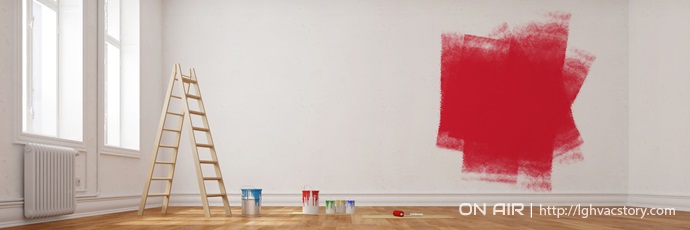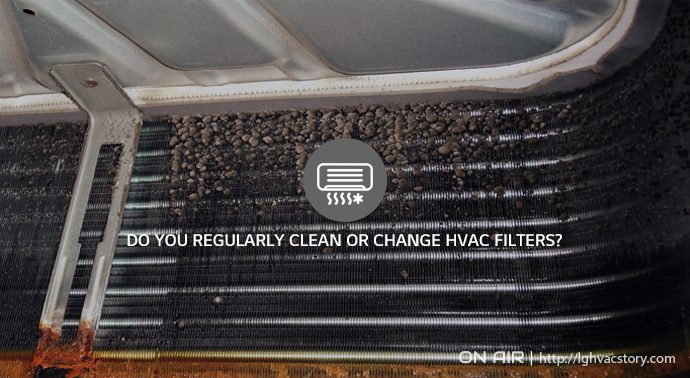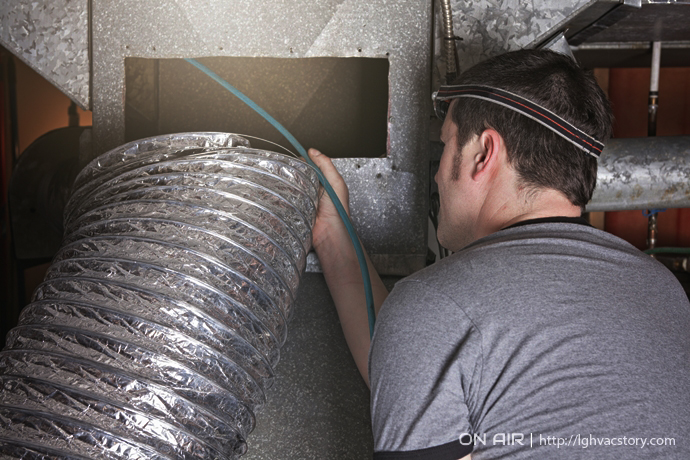Most people spend about 80-90% of their day indoors. Yet, according to the World Health Organization (WHO), our lungs are a thousand times more likely to absorb pollutants from indoor air than outdoor air. This is because it’s harder for pollutants to be naturally diluted when the air is trapped inside enclosed buildings. Indoor air pollution levels skyrocket in winter, when people tend to close all their windows to keep the heat in and save energy, which stops the ventilation of air.
Today’s posting will give you a list of what may be polluting the air you breathe when you’re inside. Have a look at the list and check out how you can improve your air quality as well.
Indoor Air Quality Checklist
✓ Was Your Building Constructed Within the Last Five Years?

Sick building syndrome is caused by chemicals created within newly constructed homes and buildings. These chemicals cause severe headache, nausea, respiratory illness, and atopic dermatitis. It can take up to 5-6 years for these chemicals to fade away. If you are planning to construct or remodel a building, seriously consider using eco-friendly materials. If you don’t get to choose the building material, then try the ventilation method called “bake-out”.
What is a bake-out?
Bake-out refers to a method that removes toxic pollutants in newly constructed houses and buildings, by turning up the heat as much as possible for a certain amount of time so that toxins are emitted and then ventilating the room. Elderly people, children, and pregnant women must keep away from the room or building during a bake-out, and the space should be regularly ventilated after the procedure.
✓ How Often Do You Open Your Windows?
The easiest and fastest way to improve air quality is ventilation, which lowers the level of pollutants by letting in fresh air from outside. It is important to ventilate buildings at least twice a day, by opening all windows for about thirty minutes each time. Make sure you don’t forget to open windows when you get a new piece of furniture or use appliances like vacuums.
✓ Do You Check Fine Dust Forecasts?
Even though I just emphasized ventilation, it isn’t always good to keep the windows open as long as possible. Indoor air may actually worsen if windows are opened for too long when the fine dust level outside is high. Ultrafine dust particles (PM 2.5) are less than 1/20th of the thickness of a strand of hair, and they can easily permeate deep into lungs to cause strokes and heart attacks. Make sure you check the Air Quality Index whenever checking the daily weather forecast.
Global real-time fine dust level report site: https://waqi.info/
✓ Does Your Home Have Any Plants?
NASA uses plants to purify the air inside tightly sealed spacecraft. There was also a study which reported that twelve plants inside a sealed room removed 80% of pollutants in twenty-four hours. Plants that are most well-known as natural air purifiers are corn plants, geraniums, Vicks plants, and begonias.
✓ Do You Regularly Clean or Change HVAC Filters?

Filters basically work as masks to protect us every day. Like the masks we actually wear, filters are also supposed to be cleaned and changed regularly. Cleaning VRF filters is quite simple. Once the cover is off, you can take out the filter very easily. Immerse it in water with some neutral detergent, and then lightly shake it. Drying the filter properly is as important as cleaning it. Leave it somewhere cool and without direct sunlight so it can dry with natural wind. It’s best to change filters every six months.
✓ Do You Clean Your Air Ducts?

Most people know that it is important to change filters, but not many pay attention to cleaning air ducts. A massive amount of air passes through air ducts every day, and these ducts can easily get dusty and even moldy during seasonal changes when the weather gets warm and we switch from warm to cool air. It is recommended to put an air hose deep into the air ducts and dust them three times a year. If it seems too difficult, you can also get help from experts.
✓ Are You Keeping Your Air Purifier/Humidifier Clean?
Using an air purifier or a humidifier is also a good idea, since fine dust from the outside can leave the building only through ventilation. Air purifiers that detect ultrafine dust particles have recently become available, making it easier to manage indoor air quality. Air purifiers and humidifiers, however, also need to be cleaned regularly to avoid bacterium and mold. Try products with automatic filter cleaning functions, or leave yourself a note about when you last cleaned or changed the filter.
Even if your HVAC system is well-designed and maintained, the indoor air quality can drop if you don’t keep pollutants under control. Just a little more effort will lead to great results in air quality and your health. 🙂
Related Post
Winter Tips for Staying Healthy
Winter Tips for Staying Healthy


































